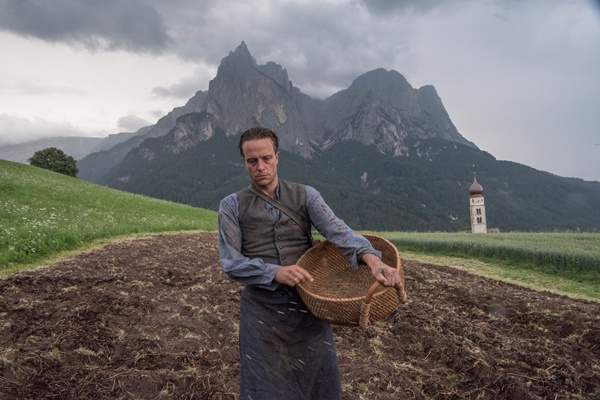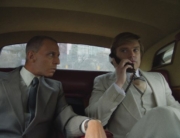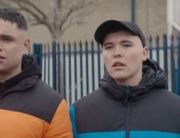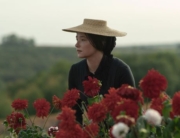
The hills are alive, once again, in Terrence Malick’s portrait of Austrian farmer Franz Jägerstätter, who became a steadfast World War II conscientious objector, despite the ramifications to his and his family’s well-being. However, the director has made less a biopic and more—from its first frame—a Terrence Malick film, writ large.
Not since The Sound of Music have the Austrian Alps been such scene stealers. The dramatic, mountain landscapes are the go-to visual motifs in this meandering and uninspiring movie. With the rationale that the more important the subject matter the longer the film, A Hidden Life is reminiscent of 1960s roadshow releases, running at 174 minutes, much of it filler of repetitive action and imagery. (In anguish, women crumple to the ground, clutching the mud, more than a few times.)
Given its director, though, the film is visually seductive, photographed by Joerg Widmer in natural light. Almost every composition is beautiful, even if it’s only in the contrast of darkness and light. The wide shots of the Alps under ominous, dark clouds contrast with the close-ups of the cast. Filmed with an anamorphic lens, the human world looks intentionally warped.
Franz (August Diehl), his wife Fani (Valerie Pachner), and three young daughters live in an isolated rural community of St. Radegund. Nevertheless, Franz knows intrinsically that the ongoing war is wrong and that his country is killing innocents. Like Malick’s The Tree of Life or To the Wonder, his story line comprises of hundreds of scenes, scattershot fragments really. From the get-go, the filmmaker indulges in lush images of Franz’s happy family frolicking in the Austrian foothills and flashbacks to when the farmer first sets eyes on Fani, as well as their joyously dancing, cheered on by the entire village. Based on the couple’s actual correspondence, the ubiquitous voice-overs by Franz and Fani provide some insight into their thinking that would otherwise remain cryptic.
Neighbors ostracize the family because of Franz’s stance against donating to the Nazi war effort or accepting a government allowance for farmers. Malick emphasizes Franz’s saintliness over his flesh-and-blood humanity (he’s the type of man who courteously acknowledges the oldest woman in the train car). Granted, some would say that is fitting, considering that Jägerstätter was beatified by Pope Benedict XVI in 2007.
All the declarative arguments regarding Franz’s resistance feel like staged, stilted exchanges (“It’s a sin against the village.”), and strangely, the townsfolk often speak in German while Franz and Fani speak in English, which adds to the air of artificiality. The issues raised are underlined as homilies doubling as dialog: “There’s the difference between the suffering we can’t avoid and the suffering we choose.” “The sun shines on good and evil the same.” Or, “We all have blood on our hands,” to quote a commanding officer, after Franz has been called to active duty in 1943 and still refuses to swear compulsory loyalty to Adolf Hitler.
Much of the interactions are improvised, and it’s apparent. Many scenes are clumsily directed; it’s rare when the actors don’t feel posed, and the cast is left stranded as a result. The mild-mannered Franz may be a man of principle, but Diehl plays him with stone-faced resilience, a performance that comes across as stymied or diffident. Franz becomes inscrutable by default.
Despite the war occurring off screen, little tension or drama percolates. The filmmaking overwhelms the story, and what Franz stands for, other than as a symbol of religious faith and courageous resistance, becomes lost.






You clearly watched a different film. I can only wonder what filtration system it is through which you viewed the film.